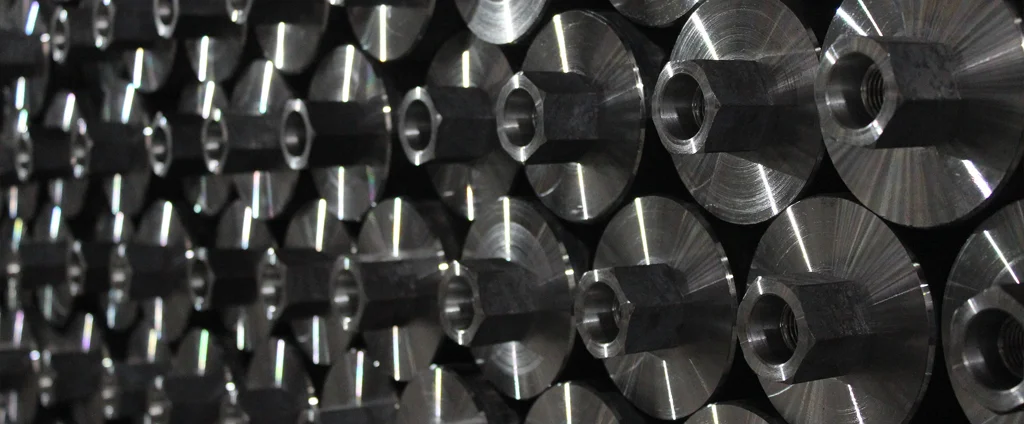SAE/AISI 1330 Carbon Steel (UNS G13300)

SAE/AISI 1330 carbon steel is a medium-carbon alloy known for its strength, toughness, and wear resistance. It is widely used in components such as gears, shafts, and axles, where moderate mechanical stress and durability are required.
| Chemical Composition | ||
|---|---|---|
| Element | Min | Max |
| Iron | 97.35% | 97.97% |
| Carbon | 0.28% | 0.33% |
| Manganese | 1.60% | 1.90% |
| Phosphorous | —— | 0.035% |
| Silicon | 0.15% | 0.35% |
| Sulfur | —— | 0.04% |
The following table provides a list of SAE/AISI 1330 properties in both SI and US customary/Imperial units.
Click on the button to switch between Metric and Imperial units.
| Physical Properties | Metric |
|---|---|
| Density | 7870 kg/m3 |
| Mechanical Properties | Metric |
| Tensile Strength (Ultimate) | 520 - 710 MPa |
| Tensile Strength (Yield) | 290 - 610 MPa |
| Young’s Modulus (E) | 190 - 210 GPa |
| Bulk Modulus (K) | 140 GPa |
| Shear Modulus (G) | 80 GPa |
| Elongation at Break | 10 - 20% |
| Poisson’s Ratio (ν) | 0.27 - 0.30 |
| Brinell Hardness | 179 - 335 |
| Thermal Properties | Metric |
| Thermal Conductivity | 52 W/m·K |
| Specific Heat Capacity (Cp) | 470 J/kg·K |
| Coefficient of Thermal Expansion (αL) | 1.15×10-5 1/°C |
| Electrical Properties | Metric |
| Electrical Conductivity | 4.18×106 S/m |
| Electrical Resistivity | 2.4×10-7 Ω·m |
The values in this table are approximate and can vary depending on various factors such as the specific manufacturing process and heat treatment applied to the alloy.
Advantages & Disadvantages of 1330 Carbon Steel
| Advantages | Disadvantages |
|---|---|
| Good strength and toughness | Limited corrosion resistance |
| Excellent wear resistance | Relatively low hardenability |
| Relatively easy to machine | Susceptible to cracking during heat treatment |
| Cost-effective material | Moderate weldability |
| Can be heat treated for desired properties | Lower impact resistance compared to some other steels |
Applications of 1330 Carbon Steel
SAE/AISI 1330 carbon steel is commonly used across multiple industries thanks to its mechanical strength and moderate wear resistance, including:
- Gears and Gear Shafts: Good strength and wear resistance make it suitable for use in gears and gear shafts that transmit power and rotational motion in machinery and automotive applications.
- Axles and Shafts: The combination of strength and toughness makes it suitable for use in axles and shafts, where it can withstand high stress and torque loads.
- Bolts and Fasteners: Cost-effectiveness and relatively good machinability make it a suitable material for manufacturing bolts, studs, and other fasteners that require moderate strength and durability.
- Agricultural Machinery: Components such as tractor parts, shafts, and gears often use this steel due to its strength and ability to withstand the demanding conditions of agricultural applications.
- Construction Equipment: Used in manufacturing components like crankshafts, sprockets, and gears, where strength and wear resistance are important for withstanding heavy loads and harsh operating conditions.
- Industrial Machinery: Various components such as shafts, spindles, and gears may be made from this alloy due to its balance of strength, toughness, and machinability.
- Automotive Parts: Certain automotive components like axles, crankshafts, and transmission parts benefit from the material’s strength and durability.
